 |
Foodoric and associated companies are chemicals manufacturing companies operated in India USA UAE Europe Asia and other countries around the world. The associates have one or more of certifications like ISO-9001, ISO-14001, ISO-22000:2005, FSSC 22000; OHSAS 18001; Kosher and Halal Certified; HACCP, FSSAI and FDA - GMP approval. Buyers are assured of good quality and CIF wholesale and retail price for supplies of our Potassium Gluconate. |

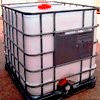
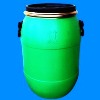
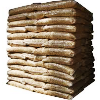
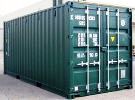
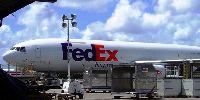
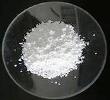
Potassium Gluconate Commercial Pure and USP FCC Food Grade Manufacturers Suppliers
Potassium Gluconate
Commercial Pure and USP FCC Food Grade

Potassium Gluconate CAS Number 299-27-4, Molecular Formula: C6H11KO7, Molecular Weight: 234.25
Potassium Gluconate FCC Food Grade Specifications
D-Gluconic Acid, Monopotassium Salt; Monopotassium DGluconate
C6H11KO7 -- Formula wt, anhydrous 234.25
C6H11KO7·H2O -- Formula wt, monohydrate 252.26
CAS: anhydrous [299-27-4]
CAS: monohydrate [35398-15-3]
DESCRIPTION
Potassium Gluconate occurs as a white or yellow-white, crystalline powder or granules. It is anhydrous or the monohydrate. It is freely soluble in water and in glycerin, slightly soluble in alcohol, and insoluble in ether.
REQUIREMENTS
Indicate whether it is anhydrous or the monohydrate.
Identification:
A. A sample responds to the flame test for Potassium.
B. Dissolve a quantity of sample in water, heating in a water bath at 60° if necessary, to obtain a Test Solution containing 10 mg/mL. Similarly, prepare a Standard Solution of USP Potassium Gluconate Reference Standard in water, diluting to 10 mg/mL. To prepare a Spray Reagent, dissolve 2.5 g of ammonium molybdate in about 50 mL of 2 N sulfuric acid in a 100-mL volumetric flask, add 1.0 g of ceric sulfate, swirl to dissolve, dilute with 2 N sulfuric acid to volume, and mix. Apply separate 5-L portions of the Test Solution and the Standard Solution on a suitable thin-layer chromatographic plate, coated with a 0.25-mm layer of chromatographic silica gel, and allow to dry. Develop the chromatogram in a solvent system consisting of a 50:30:10:10 mixture of alcohol, water, ammonium hydroxide, and ethyl acetate until the solvent front has moved about three-fourths of the length of the plate. Remove the plate from the chamber, and dry at 110C for 20 min. Allow to cool, and spray with Spray Reagent. After spraying, heat the plate at 110° for about 10 min. The principal spot obtained from the Test Solution corresponds in color, size, and Rf value to that obtained from the Standard Solution.
C. The infrared absorption spectrum of a mineral oil dispersion of the sample, previously dried, exhibits relative maxima at the same wavelengths as those of a similar preparation of USP Potassium Gluconate Reference Standard.
Assay: Not less than 98.0% of C6H11KO7, calculated on the dried basis.
Lead: Not more than 2 mg/kg.
Loss on Drying: Anhydrous: Not more than 3.0%; Monohydrate: Between 6.0% and 7.5%.
Reducing Substances: Not more than 1.0%.
Potassium Gluconate USP
C6H11KO7(anhydrous) -- 234.25
d-Gluconic acid, monopotassium salt.
Monopotassium d-gluconate -- [CAS 299-27-4].
Monohydrate 252.26 -- [CAS 35398-15-3].
Potassium Gluconate is anhydrous or contains one molecule of water of hydration. It contains not less than 97.0 percent and not more than 103.0 percent of C6H11KO7, calculated on the dried basis.
Label it to indicate whether it is anhydrous or the monohydrate.
Identification—
A: Infrared Absorption.
B: It responds to the flame test for Potassium.
C: It responds to Identification test B for Gluconate under Calcium Gluconate.
Loss on drying— Dry it in vacuum at 105C for 4 hours: the anhydrous form loses not more than 3.0% of its weight, and the monohydrate loses between 6.0% and 7.5% of its weight.
Heavy metals— Dissolve 1 g in 10 mL of water, add 6 mL of 3 N hydrochloric acid, and dilute with water to 25 mL: the limit is 0.002%.
Reducing substances— Transfer 1.0 g to a 250-mL conical flask, dissolve in 10 mL of water, and add 25 mL of alkaline cupric citrate TS. Cover the flask, boil gently for 5 minutes, accurately timed, and cool rapidly to room temperature. Add 25 mL of 0.6 N acetic acid, 10.0 mL of 0.1 N iodine VS, and 10 mL of 3 N hydrochloric acid, and titrate with 0.1 N sodium thiosulfate VS, adding 3 mL of starch TS as the endpoint is approached. Perform a blank determination, omitting the specimen, and note the difference in volumes required. Each mL of the difference in volume of 0.1 N sodium thiosulfate consumed is equivalent to 2.7 mg of reducing substances (as dextrose): the limit is 1.0%.
Assay—
Potassium stock solution— Dissolve 190.7 mg of potassium chloride, previously dried at 105C for 2 hours, in water. Transfer to a 1000-mL volumetric flask, dilute with water to volume, and mix. Transfer 100.0 mL of this solution to a 1000-mL volumetric flask, dilute with water to volume, and mix. This solution contains 10 µg of potassium (equivalent to 19.07 µg of potassium chloride) per mL.
Standard preparations— To separate 100-mL volumetric flasks transfer 10.0, 15.0, and 20.0 mL, respectively, of Potassium stock solution. To each flask add 2.0 mL of sodium chloride solution (1 in 5) and 1.0 mL of hydrochloric acid, dilute with water to volume, and mix. The Standard preparations contain, respectively, 1.0, 1.5, and 2.0 µg of potassium per mL.
Assay preparation— Transfer about 180 mg of Potassium Gluconate, accurately weighed, to a 1000-mL volumetric flask, add water to volume, and mix. Filter a portion of the solution. Transfer 5.0 mL of the filtrate to a 100-mL volumetric flask, add 2.0 mL of sodium chloride solution (1 in 5) and 1.0 mL of hydrochloric acid, dilute with water to volume, and mix.
Procedure— Concomitantly determine the absorbances of the Standard preparations and the Assay preparation at the potassium emission line of 766.5 nm, with a suitable atomic absorption spectrophotometer equipped with a potassium hollow-cathode lamp and an air–acetylene flame, using water as the blank. Plot the absorbance of the Standard preparation versus concentration, in µg per mL, of potassium, and draw the straight line best fitting the three plotted points. From the graph so obtained, determine the concentration, in µg per mL, of potassium in the Assay preparation. Calculate the weight, in mg, of C6H11KO7 in the Potassium Gluconate taken by the formula:
20C(234.25 / 39.10)
in which C is the concentration, in µg per mL, of potassium in the Assay preparation, 234.25 is the molecular weight of potassium gluconate, and 39.10 is the atomic weight of potassium.

Potassium Gluconate Manufacturers Suppliers:
Foodoric Group of Cos
India, USA, UAE, Europe
e-mail: info@foodoric.com

Copyright
Last
14 March, 2022
Potassium Gluconate Suppliers, Exporters, Importers, Manufacturers offering good CIF wholesale and retail prices, quality and online information.
A jackal woke up early in the morning and went in to the plains. He looked at his long shadow in the rising morning sun and said to himself, "I must have a camel for my meal today".
He kept moving around till noon and it was getting hot and the jackal was tired. He was also hungry and thirsty. He looked at his small shadow in the mid-day sun. He murmered, "I was only joking about the camel, a mouse will do".